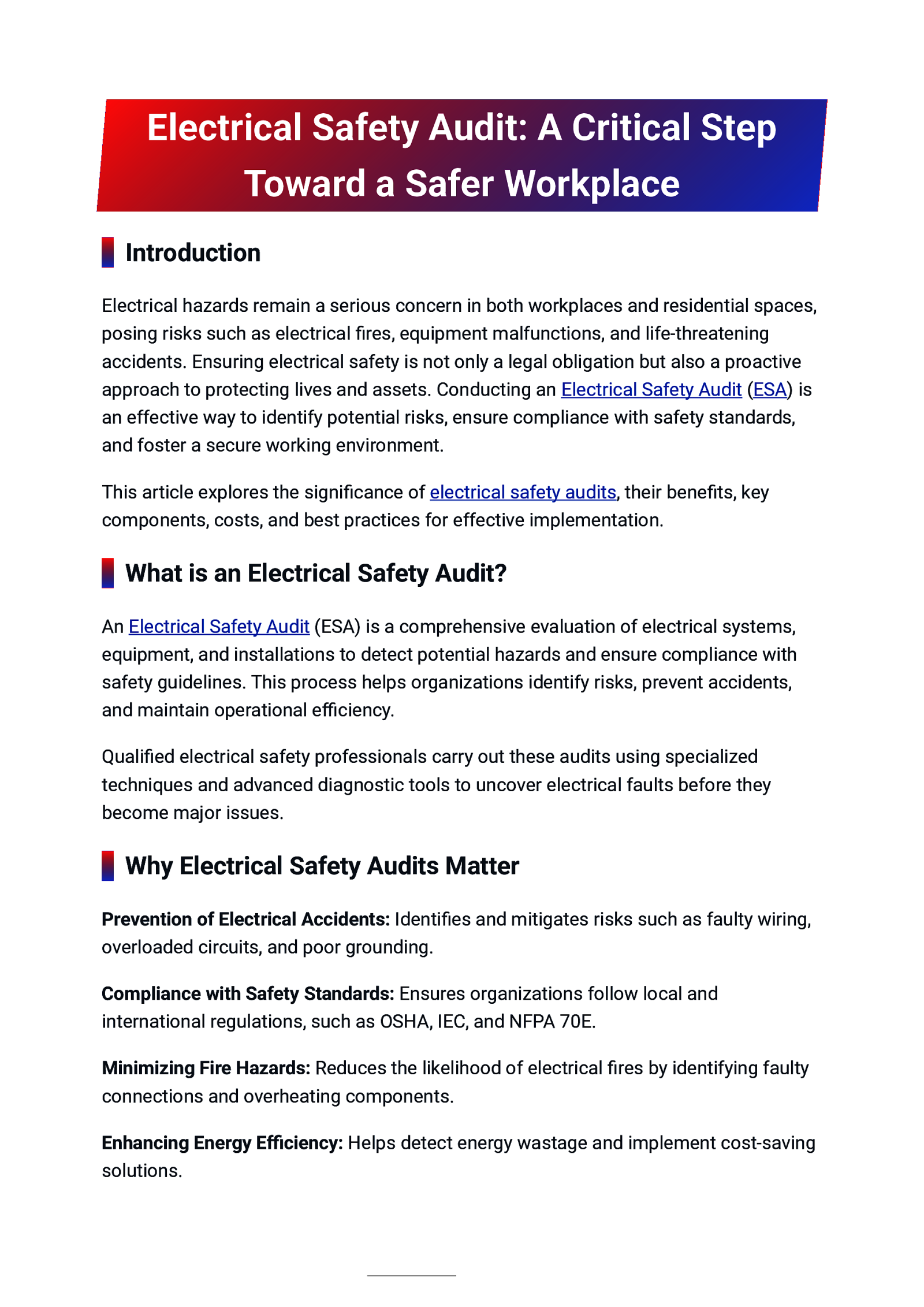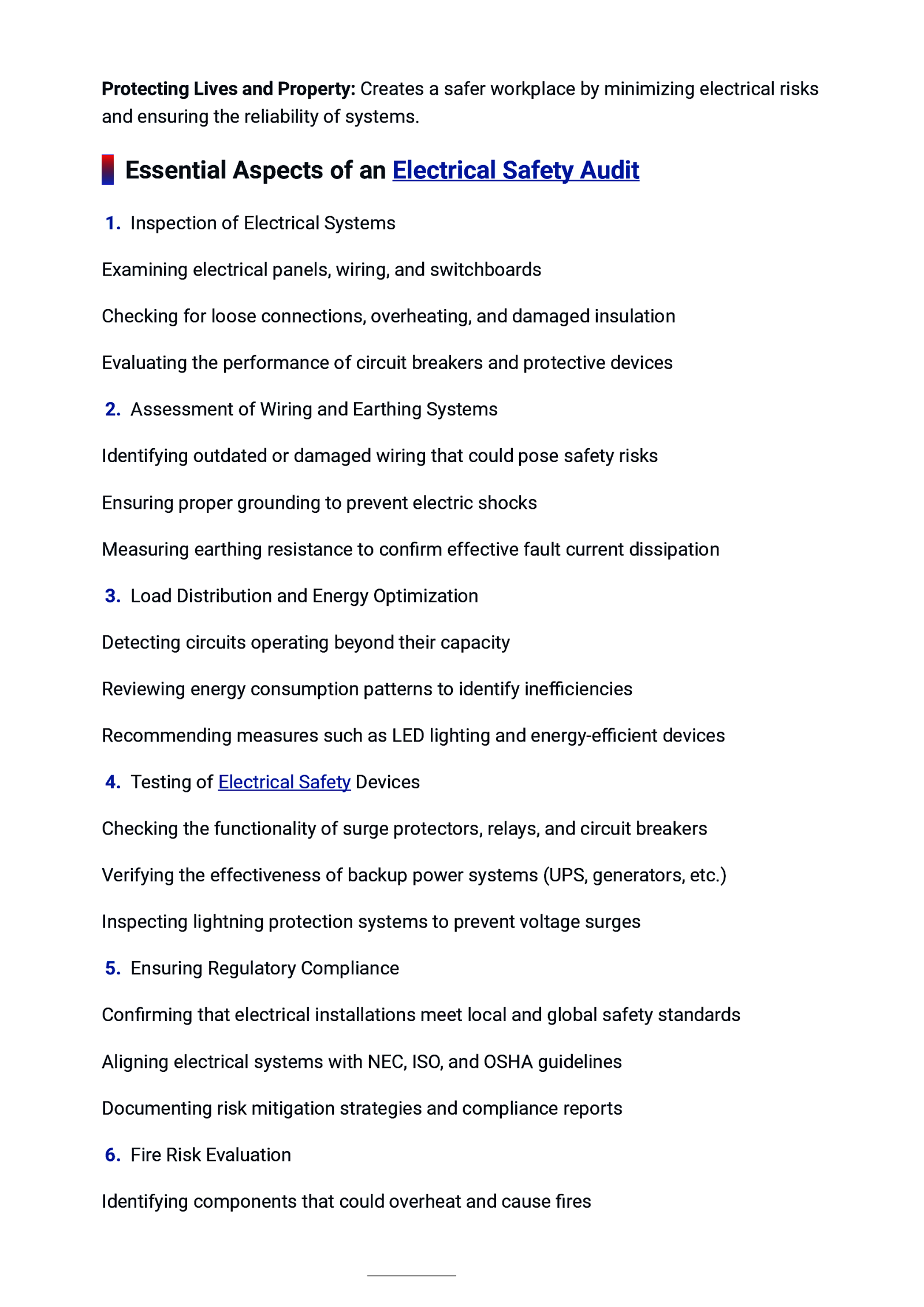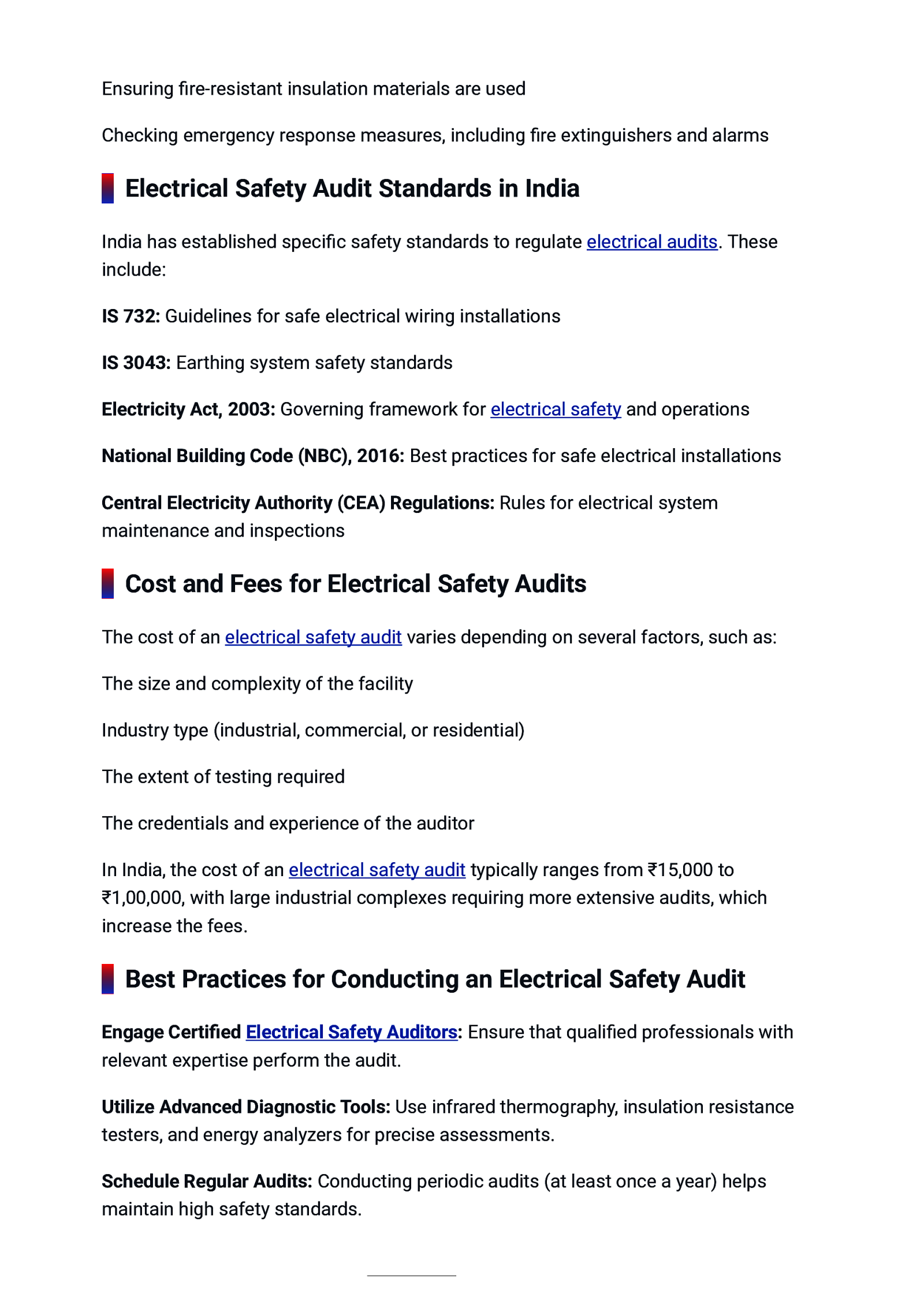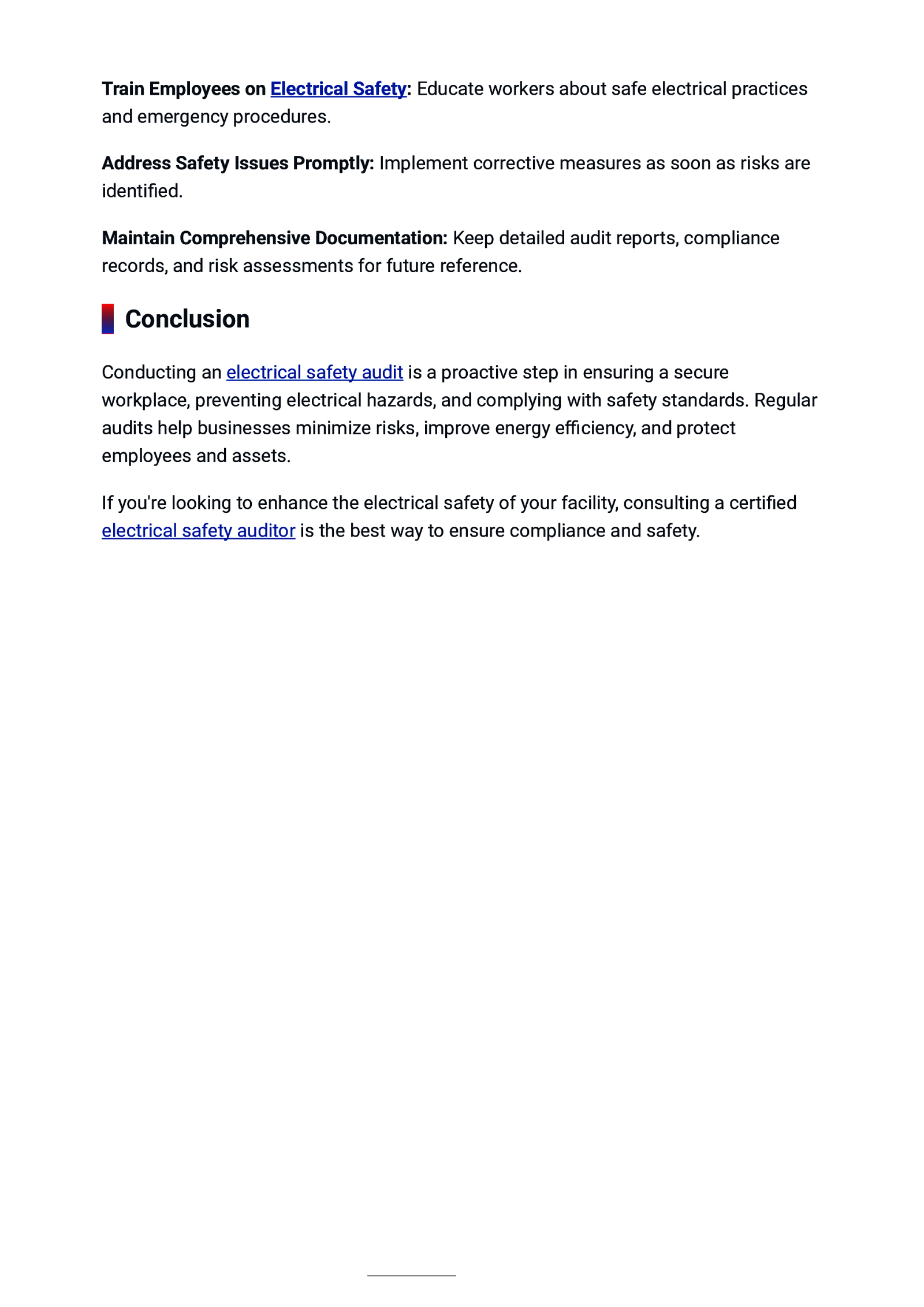Electrical Safety Audit: A Critical Step Toward a Safer Workplace Introduction Electrical hazards remain a serious concern in both workplaces and residential spaces, posing risks such as electrical fires, equipment malfunctions, and life-threatening accidents. Ensuring electrical safety is not only a legal obligation but also a proactive approach to protecting lives and assets. Conducting an Electrical Safety Audit (ESA) is an effective way to identify potential risks, ensure compliance with safety standards, and foster a secure working environment. This article explores the significance of electrical safety audits, their benefits, key components, costs, and best practices for effective implementation. What is an Electrical Safety Audit? An Electrical Safety Audit (ESA) is a comprehensive evaluation of electrical systems, equipment, and installations to detect potential hazards and ensure compliance with safety guidelines. This process helps organizations identify risks, prevent accidents, and maintain operational efficiency. Qualified electrical safety professionals carry out these audits using specialized techniques and advanced diagnostic tools to uncover electrical faults before they become major issues. Why Electrical Safety Audits Matter Prevention of Electrical Accidents: Identifies and mitigates risks such as faulty wiring, overloaded circuits, and poor grounding. Compliance with Safety Standards: Ensures organizations follow local and international regulations, such as OSHA, IEC, and NFPA 70E. Minimizing Fire Hazards: Reduces the likelihood of electrical fires by identifying faulty connections and overheating components. Enhancing Energy Efficiency: Helps detect energy wastage and implement cost-saving solutions.



